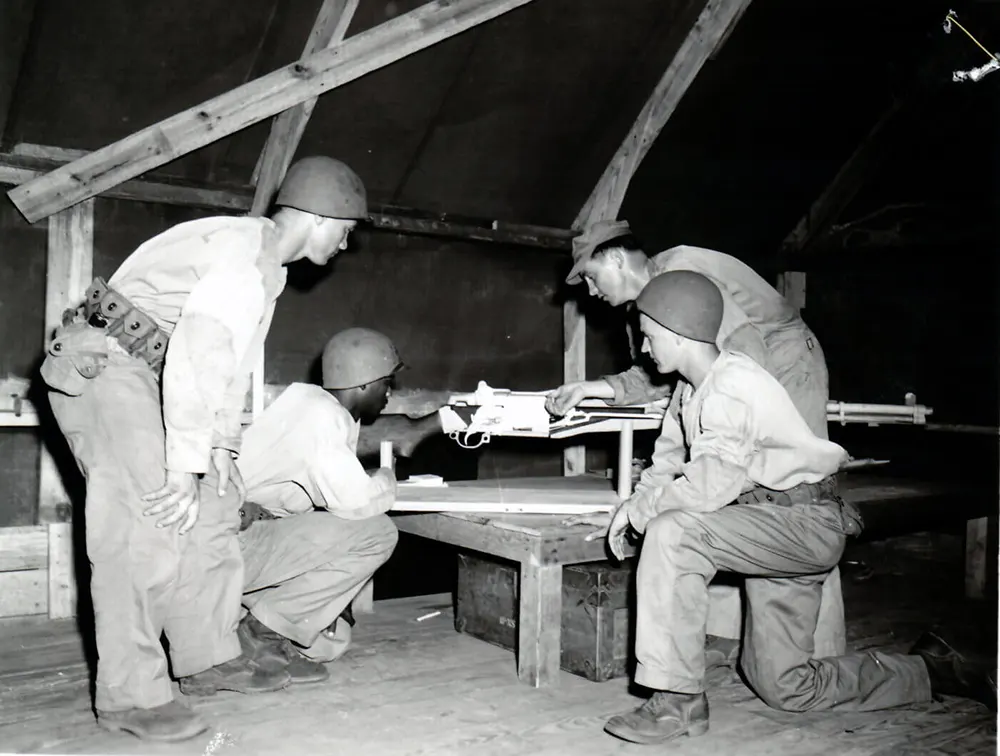Posters, comics, training films, and even cartoons were used to help train the new soldiers. One of the most interesting and effective hands-on training educational tools was the use of gigantic fake weapons as a way to help the soldier better understand the parts and the mechanics of a weapon. One of the first of these training aids was the BAR Double Size “Device-3-F-3.” In 1943, the Army and the Naval Research Special Devices Center collaborated to create the oversized, non-firing, sectionalized training model of the M1918A2 Browning Automatic Rifle. Officially the purpose was “For reasons of easier identification by training classes, all vital component parts have been made to the same scale, two times as big as the corresponding parts in the operational weapon.” The U.S. Navy Training Manual notes “Device 3-F-3 demonstrates the complete cycle of performance of the operational piece. This includes loading and unloading, extraction and ejection of simulated cartridges, action of the hammer, trigger, safety, clip latch, change lever and sear, movement of gas piston, and operation of the buffer spring.” There were also oversized training aids for the M1/M2 carbine, M1919 Browning machine gun, and the M1 Garand designated the M21, M22, and M24 respectively. The oversized training guns were hollow and constructed of light aluminum, so although massive, they were not heavy and quite easy to maneuver. Simulated ammunition, made of plastic, was used to demonstrate how the magazine was loaded and how the mechanism worked. Each gigantic weapon came with a plywood case for transportation and storage. These types of training weapons were used from the mid-1940s to the late 1950s. With the introduction of new weapons like the M14, the old training aids were no longer applicable. Many of these oversized guns were transferred to museums and military surplus stores. Technical training in the 1950s had two purposes. The first was to teach every soldier how to use all light infantry weapons. Some of this was intense, as with the M-1 Garand rifle (later replaced by a similar rifle, the M-14, firing a standardized NATO cartridge), which the recruits had to disassemble, clean, and reassemble in the dark, and shoot under any condition. Similarly, the recruits learned to dig foxholes, camouflage their faces for night combat, bivouac in the woods and snow, march fast over fairly long distances, use the bayonet (on dummies), and even some simplified hand-to-hand combat. The second purpose of basic was to turn a civilian into a useful soldier, which is to say: an automaton. They did everything in squad and platoon formation, got shouted at, were very respectful to the cadre and even to the designated squad leader, and generally worked the recruits to exhaustion. The intent was to stop the new soldiers from thinking as individuals and to encourage them to think as members of a combat unit. (Photo credit: Tom Laemlein via The Arsenal of Democracy’s Oversized Training Guns and thearmorylife.com / Miguel Ortiz via wearethemighty.com / U.S. National Archives and Records Administration). Notify me of new posts by email.
Δ Subscribe






